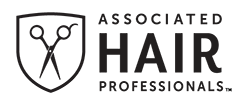posted on: 12/04/2023
If you’re interested in advocacy, the Ohio State Cosmetology and Barber Board (Board) recently gave its licensees an opportunity to share their opinions with board representatives regarding important changes within the skin care, cosmetology, and barbering professions.
The Board recently issued proposed rules that will impact hair design training hours; esthetics scope of practice; school floor plans, layout, and instructors; and licensee prohibited acts. AHP has summarized the proposed rules for you in this web post.
We encourage you to elevate your voice and email the Board at jared.yee@cos.ohio.gov before December 27 to show your support of, or opposition to, the proposed rules.
If you want to present your comments regarding the proposed rules in person, there will be a public hearing on December 27 at 9:00 a.m. EST in the Charles Penzone Board Room at 1929 Gateway Circle in Grove City, Ohio.
Hair Design Course Curriculum
The proposed rules would reduce hair design training hours from 1,200 to 1,000. The rules also state that 150 hours of academic courses can cover only the following subject areas: anatomy, physiology, chemistry, advanced chemistry, physics, biology, and advanced biology.
Esthetics Scope of Practice
The proposed rules remove esthetics services that are currently listed as examples to erase confusion among licensees. The goal of this revision is to provide clarity as to what is within the esthetics scope of practice. The following services would be removed:
- Services using any device that produces or amplifies electromagnetic radiation at wavelengths equal to or greater than one-hundred-eighty (180) nanometers
- Cryosculpting/coolsculpting; removing skin tags, moles, or angiomas; microneedling; and plasma/fibroblast skin tightening
School Floor Plan Requirements
The proposed rules address school floor plans to ensure all licensed schools have adequate space and facilities to operate. The rules would require floor plans submitted to the Board to be prepared by an architect. The rule was recommended because the Board observed discrepancies between submitted floor plans and actual facilities upon inspection.
School Layout
The proposed rules incorporate barbering school layout requirements and add a new esthetics and manicuring school requirement:
- Schools offering esthetics or manicuring programs must have at least one sink with hot and cold running water for every 15 students.
- Every school offering a barbering program must have at least one clinic station for every two students in attendance at each clinic session—clinic stations must be equipped with mirrors, adjustable-height chairs or hydraulic-reclining chairs, and accommodations for student equipment and supplies for clinic practice.
- Barbering school practice rooms must have practice stations and be equipped with at least one shampoo bowl for every 15 students.
- A barbering, hair design, or natural hairstyling school meets shampoo bowl requirements if a shampoo area is separated from clinic and practice rooms—there must be enough shampoo bowls per student, and facility design must allow access to the shampoo area from both the clinic and practice room without needing to go through the other room.
- All chemicals must be stored in a safe location that is not readily accessible to students and/or members of the public.
Licensed Instructors Required on Premises
The proposed rule requires licensed instructors to be on school premises to prevent dependence on third-party resources for education. All theory and practical courses for program hours must be taught and led by a licensed instructor; third-party resources may be used to provide additional context and information but cannot be used as the sole method of instruction.
Prohibited Acts
The proposed rules address acts that are prohibited by licensees that may result in administrative action. One new proposed prohibited act that could result in a fine and/or suspension, revocation, or denial of any license, permit, or registration is:
- Failure to produce a current government-issued form of photo ID while engaging in the practice or instruction of cosmetology, branches of cosmetology, or barbering upon inspection or request.
